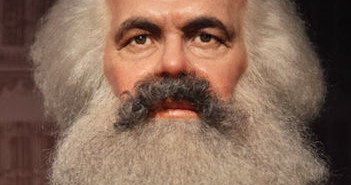May Day, May Day, May Days – What Made This Month Famous?
Mayday, mayday – how did that come to be the international code of distress? May is also the month of special worship of the Virgin Mary, and the time for the many May Balls at universities in this part of the world (although some of them, as Clive James wrote, are in June.) May 1 is celebrated in many countries as an affirmation of workers’ rights – Labour Day. The list includes Russia, China, India, Thailand, Sri Lanka and many European countries. In Mexico, Cinco de Mayo (May 5) is a holiday commemorating a surprise victory by Mexican troops over French at the battle of Puebla in 1862. In Spain both dos and tres are days remembering the French invasion at the beginning of the 19th century, and Francisco Goya painted two memorable scenes of that time.
On May the …
1st, 1931: On this day, US President Herbert Hoover officially dedicated New York City’s Empire State Building, pressing a remote button from the White House that turned on the building’s lights.
2nd, 1933: Although accounts of an aquatic beast living in Scotland’s Loch Ness date back 1,500 years, the modern legend of the Loch Ness Monster sprang from a sighting on this day. The newspaper Inverness Courier related an account of a local couple who claimed to have seen “an enormous animal rolling and plunging on the surface.” The story of the “monster” became a media phenomenon, with London newspapers sending correspondents to Scotland and a circus offering £ 20,000 sterling reward for capture of the beast.

2nd, 2011: US Special Operations Forces killed Osama bin Laden during a raid on his secret compound in Abbottabad, Pakistan. The raid marked the culmination of a decade-long manhunt for the Al-Qaeda mastermind.
4th, 1970: At Kent State University in Ohio, four students – Allison Krause, 19; Sandra Lee Scheuer, 20; Jeffrey Glenn Miller, 20; and William K. Schroeder, 19 – were killed by National Guardsmen who opened fire on a crowd of 1,000 students protesting President Richard Nixon’s decision to invade Cambodia.
12th, 1937: King George VI was crowned at Westminster Abbey in London, following the abdication of his brother, Edward VIII. King George reigned until his death in 1952. He was succeeded by his daughter Elizabeth, who recently outstayed Victoria to become the longest-serving monarch ever – over 63 years.
21st, 1991: Former Indian Prime Minister Rajiv Gandhi was assassinated, killed by a bomb hidden in a bouquet of flowers. He had served as prime minister from 1984 to 1989, succeeding his mother, Indira Gandhi, who was assassinated in 1984.
29th, 1988: Irish rower Gemma Foley born at Westminster Hospital in London.
Birthday boy of the month: Like his manifesto? Put it to the test-o.

Karl Marx was born in Treves, Germany, on May 5th, 1818. He co-authored Das Kapital and The Communist Manifesto, advocating the abolition of all private property and a system in which workers own all the means of production. You might say the idea caught on. Malcolm X, Andrei Sakharov and Ho Chi Minh also had May birthdays, so this is evidently a good month for producing independent thinkers.
Oh, and we say “Mayday” to indicate distress because of the French for “help me!” – “M’aidez”, or “m’aider”, if you prefer the infinitive.
Sources:
www.irishcultureandcustoms.com
www.history.com
www.wikipedia.com
